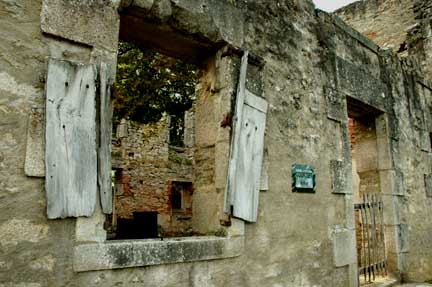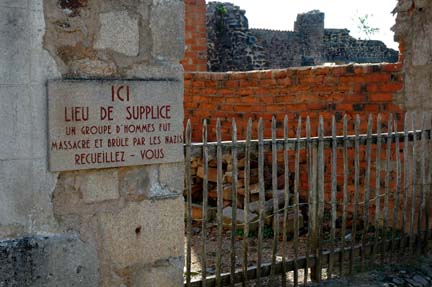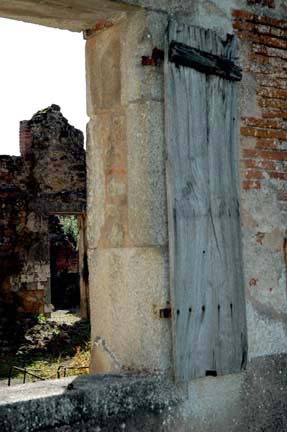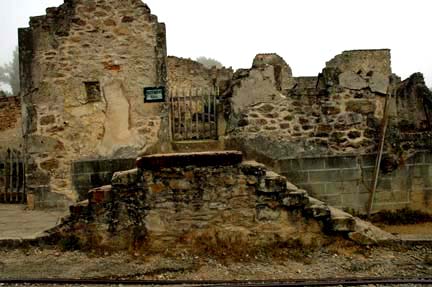Windows and doors in the Ruins

The photo above shows a window in the
Upper Town. Green signs on all the buildings identify the owner's
name or occupation. Notice the tree that can be seen through
the window. The shutters on this building didn't burn. What appears
to be smoke damage on some of the buildings is actually moss
growing on the stones.

The photo above shows the entrance to
one of the killing sites. The six buildings, where 190 men of
the village were machine-gunned to death and then burned, have
signs such as the one shown in the photo above. The sign says
that this was a place of torture where a group of men were massacred
by the Nazis. The last two words have no translation in English;
the words mean to gather or collect your thoughts to contemplate
what happened here.
The men who perpetrated the massacre
were not necessarily members of the Nazi political party. At
least one third of the men in the Waffen-SS company, that destroyed
this peaceful village and killed 642 people in cold blood, were
Frenchmen from the province of Alsace which had been incorporated
into the Greater German Reich in 1940 after the French surrendered.
Most of the soldiers were only 17 or 18 years old. In 1953, a
trial was held in which 14 Frenchmen from Alsace and 7 Germans
were prosecuted. It is doubtful if any of these young men were
members of the Nazi party, but the Center of Memory places the
blame for the masscre squarely on Hitler and the Nazis.
The photo below shows a window with a
wooden shutter which did not burn. This is one of several buildings
in the village which still have shutters.


The photo above shows the steps that
are frequently photographed as part of the street where Rue de
Emile Desourteaux curves around to the Lower Town. Rustic wooden
gates have been placed across all the doorways so that visitors
cannot enter.
|